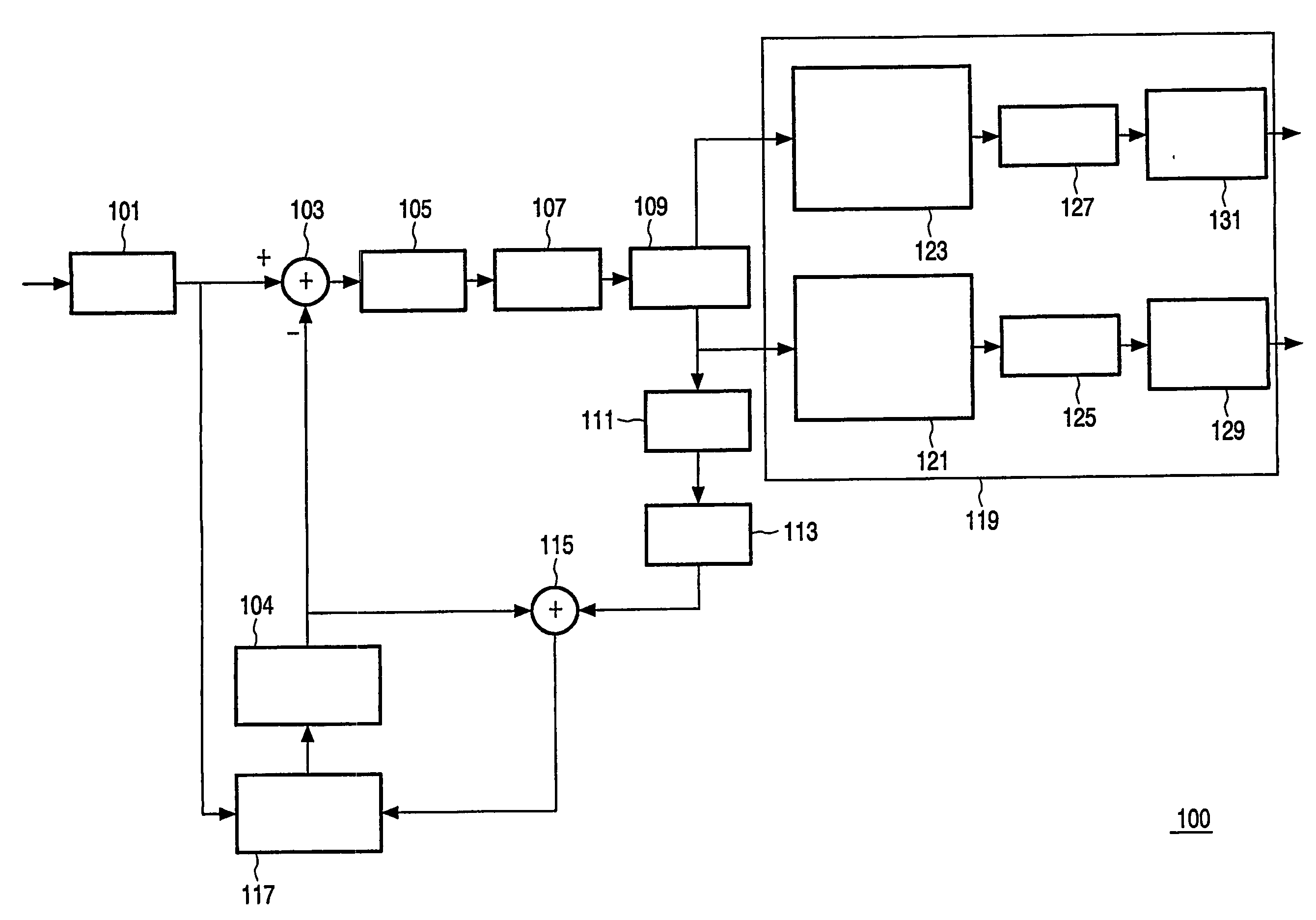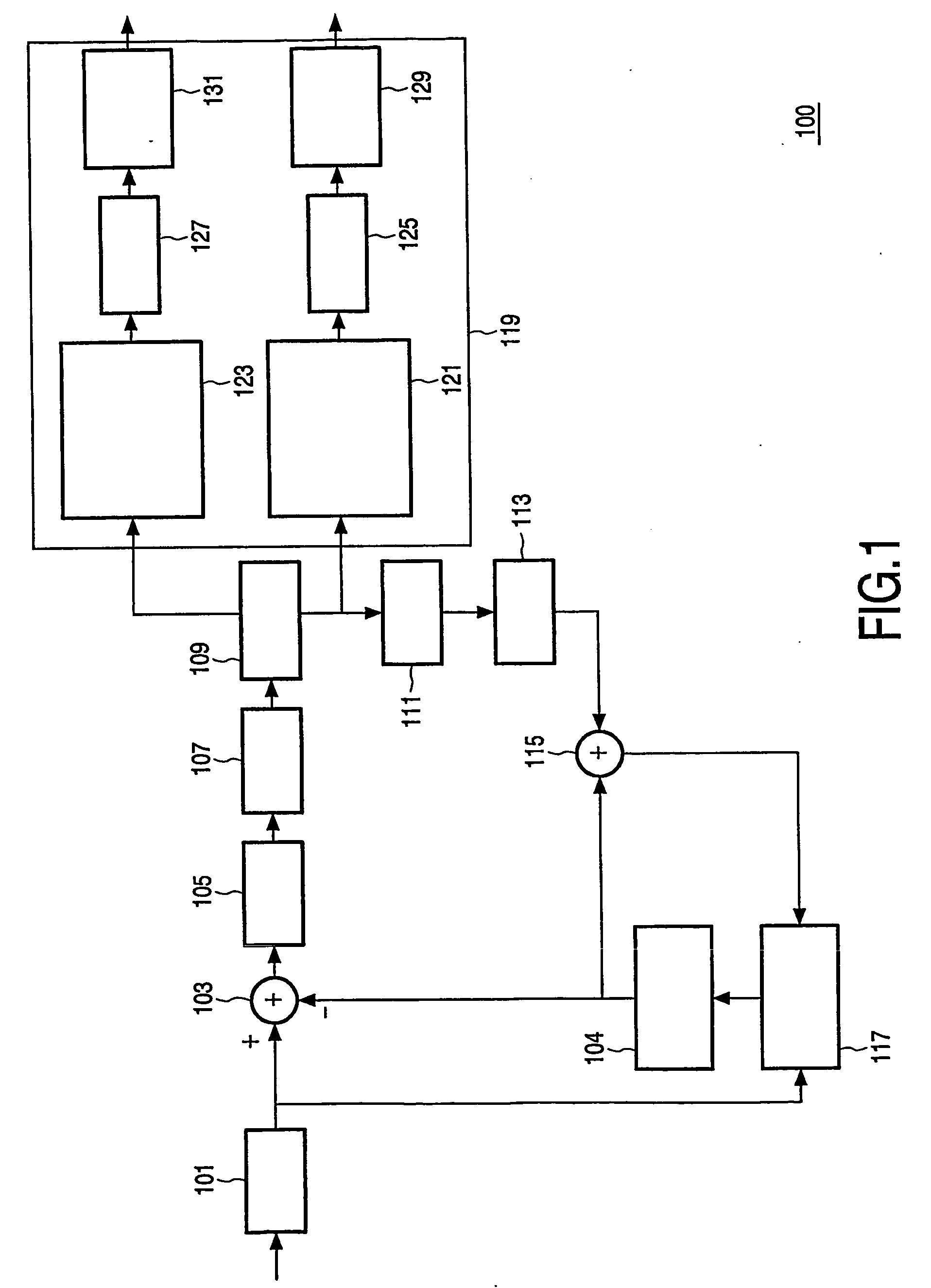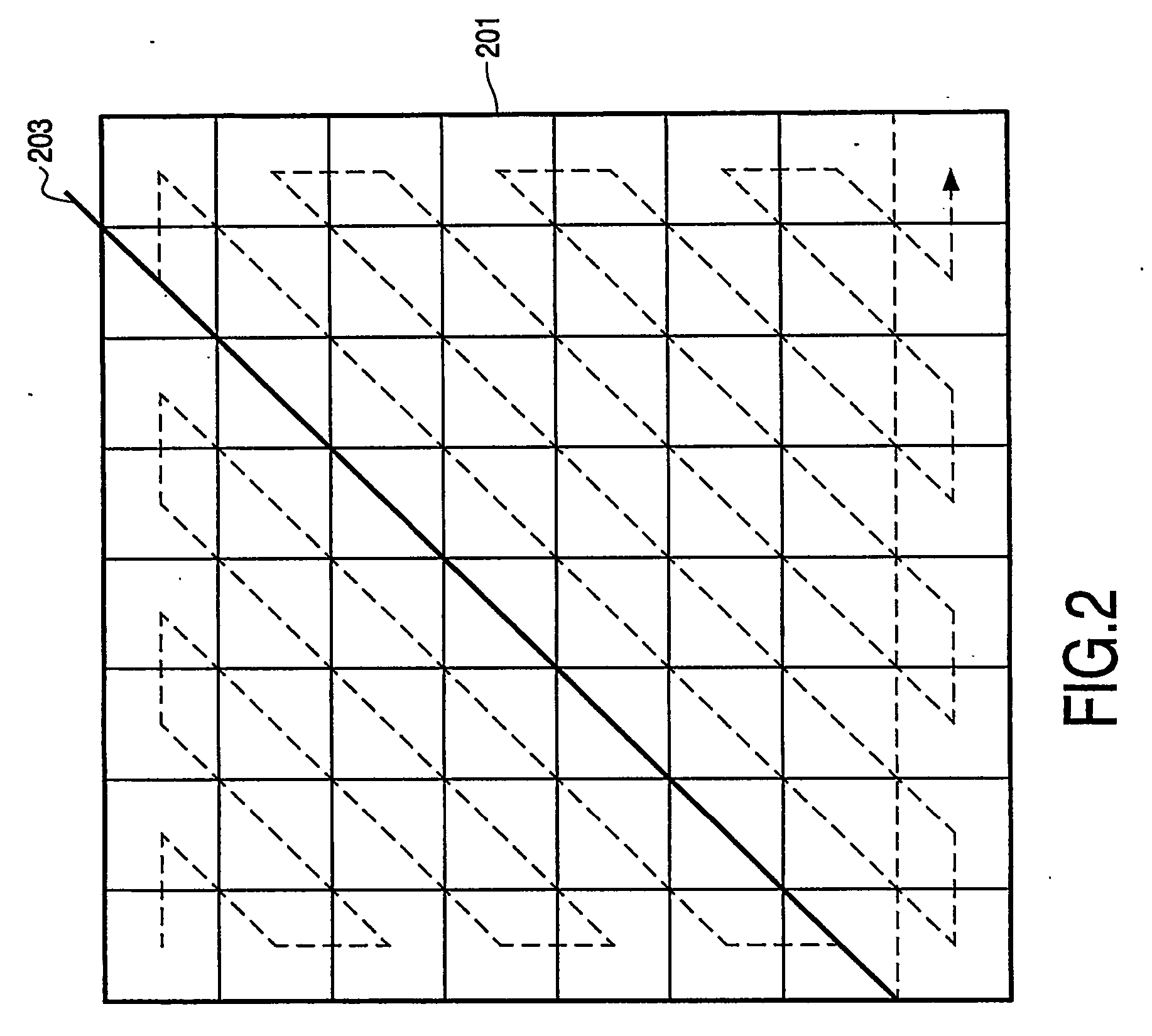Scalable video encoding
a video encoding and scalable technology, applied in the field of video encoding, can solve the problems of reduced compression efficiency, increased coding overhead, and low quality of full picture, and achieve the effect of efficient scalability of the encoded video stream, significant reduction of drift effects, and reduction of the impact of basing motion compensation on a reduced data s
- Summary
- Abstract
- Description
- Claims
- Application Information
AI Technical Summary
Benefits of technology
Problems solved by technology
Method used
Image
Examples
Embodiment Construction
[0029] A preferred embodiment of the invention will in the following be described with specific reference to the MPEG-2 video compression scheme, but it will be apparent that the invention is not limited to this application and applies equally to many other video encoding schemes including non-compressed video encoding schemes and transcoding schemes.
[0030]FIG. 1 is an illustration of a video encoder 100 in accordance with a preferred embodiment of the invention.
[0031] The video encoder 100 comprises a receiver 101 for receiving video frames. In the preferred embodiment, the video receiver is simply a functional block providing a suitable interface to a video source (not shown), which produces the video frames to be encoded. Depending on the application, the video source may for example be a video camera, a video storage unit, a video editing system or any other suitable means for providing video frames.
[0032] The video encoder 100 further comprises a first processor 103 for derivin
PUM
 Login to view more
Login to view more Abstract
Description
Claims
Application Information
 Login to view more
Login to view more - R&D Engineer
- R&D Manager
- IP Professional
- Industry Leading Data Capabilities
- Powerful AI technology
- Patent DNA Extraction
Browse by: Latest US Patents, China's latest patents, Technical Efficacy Thesaurus, Application Domain, Technology Topic.
© 2024 PatSnap. All rights reserved.Legal|Privacy policy|Modern Slavery Act Transparency Statement|Sitemap



